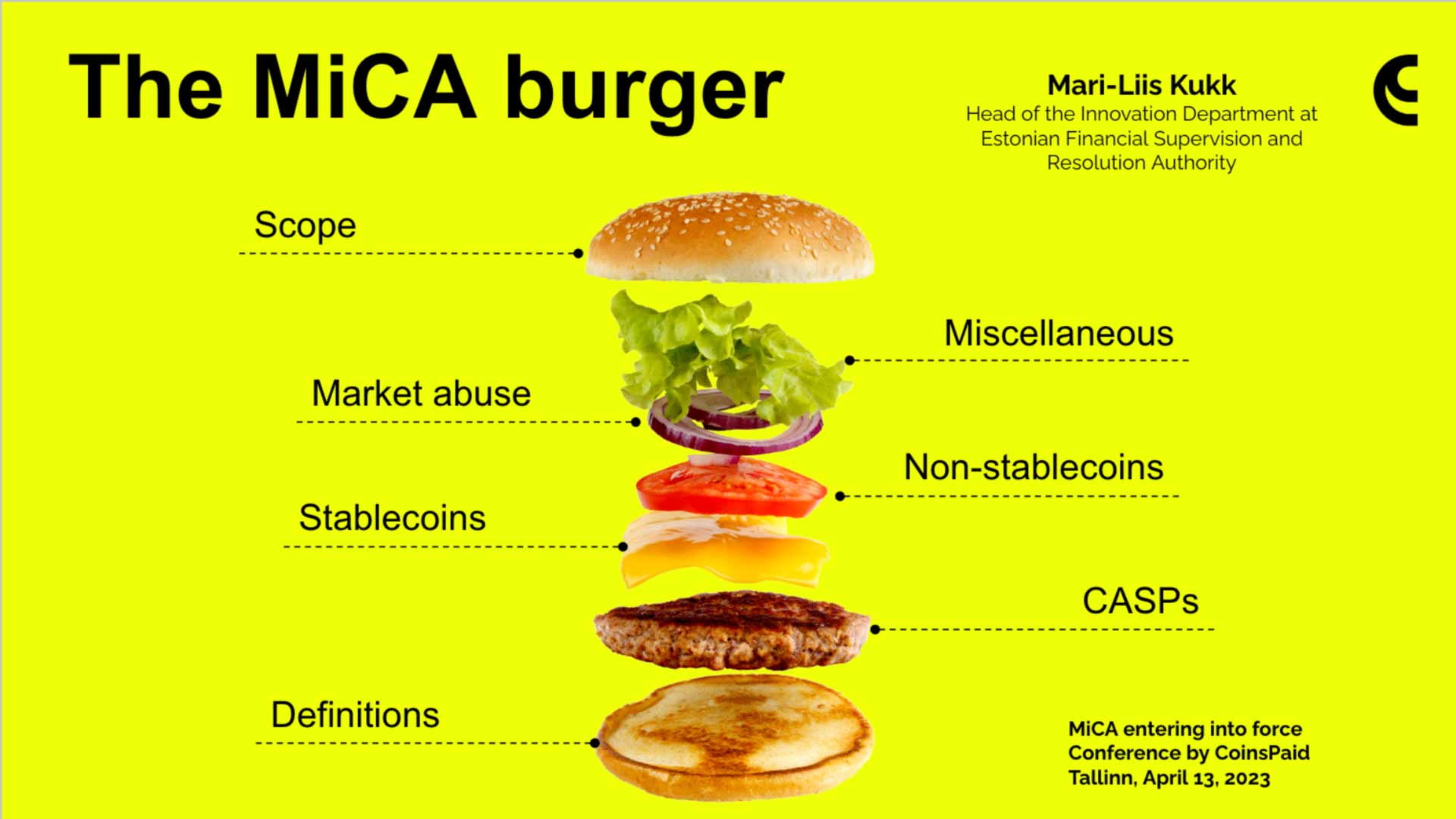CoinsPaid’s office in Tallinn welcomed European policymakers and crypto business representatives. They discussed the prospects for the digital asset industry once the EU finally passes legislation regulating the crypto-asset market (MiCA).

Last Thursday, April 13, CoinsPaid officially opened its headquarters in Tallinn. The opening included the “MiCA Entering Into Force” conference, which brought together prominent members of the European crypto businesses, politicians, and other stakeholders to discuss the prospects for the local digital asset industry. You can find a full recording of the conference on YouTube. The CP Media team collected the key statements made during the conference.
Max Krupyshev, CEO of CoinsPaid, shared his opinion that the development of legislative initiatives and interaction between regulators and crypto businesses contribute to innovation. He also noted that at the time of the conference, only 106 cryptocurrency companies operated under the Estonian regulator’s license, although in 2020, “thousands of companies had Estonian crypto licenses.”
In early 2022, Estonian regulators tightened requirements for service providers related to virtual assets, causing a decrease in the number of local companies. However, Raido Saar, President of the Estonian Web3 Chamber, believes that “Estonia has always been a couple of steps ahead of MiCA.” He also thinks that the new European legislation doesn’t pose any additional problems for Estonia, except when it comes to replacing existing licenses once they expire in 2026.
Alexandre Pinot, Co-Founder and Head of Innovation and Strategy at AMLYZE, noted that two years ago, Lithuania had less than 50 registered cryptocurrency companies, but after Estonia introduced a stricter regulatory framework, over 800 crypto businesses appeared in the country. This is due to the fact that the country’s authorities have taken a wait-and-see approach to adopting pan-European regulatory standards and are in no hurry to develop their own legislation. Indrė Ambrasūnaitė, Head of Regulatory Compliance at Nuvei, expects the cryptocurrency industry in Lithuania to continue growing even after MiCA is adopted.
Magnus Jones, EY Nordic Blockchain and Innovation Lead, said that a crypto task force in Norway took the lead in ensuring the operation of crypto companies, and local tax authorities have been monitoring crypto-assets since 2012. That said, the country also lacks cryptocurrency legislation because the local “crypto landscape is evolving so rapidly that created laws could become outdated by the time of adoption.”
Among MiCA’s main goals, the speakers highlighted:
- Creating a pan-European regulatory framework for crypto-assets and related markets.
- Developing a consistent set of rules for crypto-asset issuers, service providers, and trading platforms in the EU.
- Strengthening investor protection, promoting market integrity, and reducing systemic risks associated with crypto-assets.
- Improving (or saving) the crypto industry’s reputation by increasing its transparency and accountability and reducing the risk of illegal activities such as money laundering and terrorist financing.
- Gaining credibility in the industry, increasing industry investments and introducing innovations.
Ondřej Kovařík, Member of the European Parliament and Shadow Rapporteur for MiCA, believes that regulatory certainty will encourage greater adoption of crypto-assets in traditional financial institutions.
MiCA could have major implications for the European payments market, especially in the area of crypto payments, by shaping the regulatory framework for issuing and using stablecoins. “Stablecoins could change the future of payments. They bridge fiat and cryptocurrencies,” said Christoph Baert, Senior Advisor, EU Regulation in Mastercard. However, he warned that MiCA could isolate Europe from innovation if stablecoins are restricted or EU stablecoins are favored.
All in all, the speakers agreed that a smooth implementation of MiCA is only possible if traditional financial institutions, such as banks and payment systems, work closely with blockchain companies and digital asset service providers.
At the end of the conference, Max Krupyshev, CEO of CoinsPaid, said that staying abreast of regulatory developments would allow all crypto-asset providers to take the lead in financial innovation. Such events also contribute to this.
The European Parliament tentatively approved MiCA back in the summer of 2022, but the final passage of the bill was put on hold. The next meeting is scheduled for April 19, 2023. If the bill receives formal approval from the Council of the EU, it’ll be published in the Official Journal of the European Union and come into force in 20 days. After that, however, an 18-month transition period will begin before MiCA rules finally take effect.










